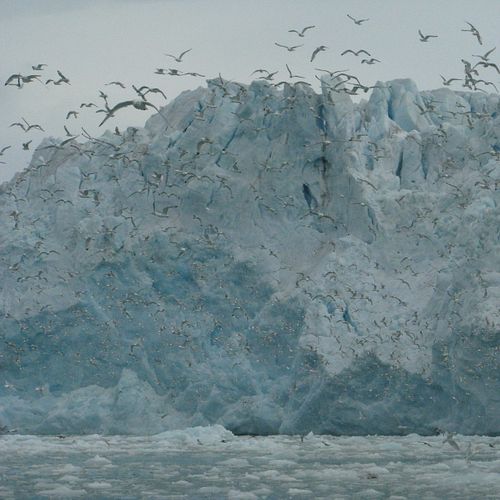22. oktober 2021 nyhet
A series of four recently published papers co-authored by Benjamin Merkel from Akvaplan-niva, discuss large-scale ocean-basin-wide multi-species seabird distributions across the year. Merkel uses various methods in spatial data analyses and species distribution modelling to study distribution patterns and migration behaviour of seabirds. These results are of relevance to national and international conservation and management strategies. They change how we perceive the behaviour and habitat dependencies of these highly mobile animals during times of the year where there is little prior knowledge. Three of the four papers are outputs from the SEATRACK program (www.seapop.no/seatrack) a seabird tracking effort by 40+ collaborators from 8 countries working on 11 seabird species at 58 study sites across the North Atlantic.
The 4 papers are:
(1) Survey identifies central Northwest Atlantic as important area for seabirds in support of proposed Marine Protected Area
Surprisingly little has been known about seabird distribution in the oceanic North Atlantic. However, after recent tracking showed that relative abundance and diversity peak in the central NW Atlantic, this area is now accepted as a Marine Protected Area (MPA https://www.ospar.org/news/osp...). A ship survey was undertaken in June 2017 by the University of Glasgow to systematically survey seabirds and environmental conditions across this area. The survey showed that medium-sized petrels (99.8%), especially Great Shearwaters (63%), accounted for the majority of total bird biomass. The results presented support the conclusion that a MPA status is warranted and they provide a baseline against which future changes can be assessed.
https://doi.org/10.1016/j.pocean.2021.102657
About the paper in Scientific American: https://www.scientificamerican...
About the paper in Birdlife International: https://www.birdlife.org/news/...
(2) Seabirds do it differently - how seabird migration differs from "classical" migration
Bird migration is commonly defined as a seasonal movement between where birds breed and where they spend the rest of the year. It generally involves relatively straight and directed movements over vast distances, across latitudes, with mostly travelling time and little or no feeding on the way. Thanks to a large-scale tracking dataset (www.seapop.no/en/seatrack) of six pelagic seabird species (northern fulmar, common guillemot, Brünnich’s guillemot, little auk, Atlantic puffin, black-legged kittiwake), the migration characteristics of seabirds were identified and the conclusion was that seabirds do spend their winter at lower latitudes. However, they do not fundamentally alter their daily behaviour but continue to forage and rest while migrating. In other words, they engage in a “fly-and-forage” migratory strategy unlike passerines or raptors. This study indicates the need for conservation efforts to consider the potential threats to seabirds from ecosystem degradation along the migration routes and not just at breeding and overwintering locations.
https://doi.org/10.3354/meps13872
(3) Where the wild birds are - Year-round distribution of Northeast Atlantic seabird populations
This study developed a spatial dataset with estimates of the monthly distribution of six pelagic seabird species breeding in the Northeast Atlantic. These tracking data were combined with environmental information describing the physical environment of the birds, and information on seabird population sizes across the North Atlantic. From this it was possible to estimate monthly seabird distributions throughout the year. The resulting dataset represents the annual distribution of 23.5 million adult pelagic seabirds, or 87% of the Northeast Atlantic breeding population of the study species. The study shows how spatial distribution of seabirds, including the nonbreeding habitats, is important for management of marine protected areas.
https://doi.org/10.3354/meps13854
(4) North Atlantic winter cyclones starve seabirds
This study mapped cyclone paths and seabird wintering areas in the North Atlantic and revealed hotspots where they overlap. Modelling the energy expenditure of seabirds during these extreme weather events, suggests that an inability to feed in cyclones is likely to be the cause of wind forced death for these species.

